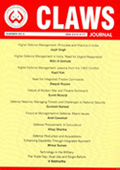|
(The 20-22 Dec 2012 visit and interaction of President Thein Sein with the CII at Mumbai , if steered correctly would not only serve the industrial growth interests of Myanmar but also give an opportunity for bolstering strategic ties and development of India’s eastern states bordering Myanmar. For this, apart from the CII, the government too must plan the investment and cooperation gateways strategically.)
Myanmar occupies a critical geo-strategic position in South and South East Asia. Its importance to both India and China in many ways cannot be gainsaid. Seeing its strategic importance China made its moves early and during the period (1990 and beyond) when most world powers had isolated Myanmar on grounds of Human Rights abuse, China not only recognised the military regime but also helped it economically and militarily. With the support of a strong regional power and investments coming in, the military regime was able to strengthen and consolidate its position and keep the democratic forces at bay. In late nineties, once the military regime stabilised, India too realised its importance and in spite of the West’s hard stand, began engaging the Government of Myanmar and offered cooperation in all sectors, especially trade and commerce. Though China continued to have its first mover advantage and having proven its affability during the period of Myanmar’s isolation it left no stone unturned to assert its will on the projects like Myitsone and Shwe-Yunnan Gas pipeline which were in its own vital interests.
Through the Look–East policy of late nineties India extended its cooperation on all fronts but was unable to compete with the Chinese presence and investments in the region. After the 2010 elections in Myanmar and installation of a democratic government (albeit under a military regime), Indo-Myanmar relations saw a new turn. Shortly after the elections owing to the wide agitations by the hilly ethnic groups, the work on $3.6 billion mega Myitsone Project was suspended. Also, in spite the chagrin of the Chinese regime, the work on the gas pipeline too has been delayed and marred with regular protests by ethnic groups. The April 2012 historic visit of Prime Minister Manmohan Singh to Myanmar gave further impetus to the growing warmth in relations between the two countries. This was followed by the subtle acceptance of the new regime by other countries especially USA who softened its sanctions to allow the leaders of Myanmar to visit USA. Visit of Aung San Suu Kyi and Myanmar’s President Thein Sein to USA earlier this year came to be seen as a watershed in the history of the military regime. This was followed by a short but significant visit by US President Barak Obama to Myanmar. A number of positive steps taken by Thein Sein’s democratic regime prior and after this visit have been cautiously lauded by the closely watching world. India too made its gestures clear by regular visits of dignitaries, the most recent being by India’s Foreign Minister.
The fast sequence of events of last one year has brought Myanmar to an end Myanmar’s isolation. India which has a 1600 Km long border with Myanmar now has the opportunity to further bolster its ties with Myanmar and take them to new heights. The visit of US President and opening up of Myanmar’s economy is being seen as a boon for the Indian industry. The ailing economy of Myanmar is in dire need of aid for development on almost all fronts like infrastructure, health, education, information technology, communications and aviation sector. Inflow of aid for development has already commenced. India, with its developed Industrial expertise can extend help by undertaking a number of projects at fast pace due to sheer proximity. Seeing the growing resentment of the local ethnic groups against the existing Chinese companies operating the projects given by the previous regime, the Indian companies would be preferred. A carefully done competitive bidding by Indian MNCs for undertaking future projects would suit strategic interests of both the countries.
Though the 20-22 December 2012 visit of President Thein Sein to India has escaped the media glare, it must be seen as a very significant step .The President invited India’s industry captains to invest in agriculture, energy and infrastructure. The closed door meeting with the members of CII(along with representatives of the government) at Mumbai assumes significance in terms of investment opportunities and also for India’s strategic interests in the region. The CII has reciprocated Thein Sein’s gesture by proposing five points of connectivity between the two countries in culture and commerce; promoting integration and synergy in power and railway sectors; appropriate banking arrangements to foster trade and investment; enhancing bilateral engagement in trade protection, and co-operation and collaboration in industries like tourism and software.
However, what needs to be kept in mind by the Indian industry and the Government is the wider interest of the north eastern states so that the dividends of growth are seen on both sides of the border areas. A proper roadmap of the government’s industry plan should include such sectors which not only give inclusive growth to Myanmar but also regional growth for India’s north eastern states. The invitation to invest in oil and energy sector by President Thein Sein must be utilised by the government post haste keeping in mind that China is doing everything possible to complete the Shwe Gas pipeline and make it functional by next year end. India must think in terms of harnessing the energy reserves in Myanmar and in creating energy-processing hubs in states such as Manipur which could provide employment opportunities for the local youth and to that extent lead to reduction in insurgency levels. Setting up of ancillary industry for supply to specific projects in Myanmar can be planned and economic zones specified for such purpose. The proposals must also stress upon the development of communication infrastructure to support the projects undertaken through the land route.
A proper planning of the projects can have a long term impact of development for Myanmar’s economy as well as the economies of the states in North East India. It’s time for us to reframe our ‘Look-East’ Policy to make it into ‘Look-East through North-East’.
Lt Col Mohinder Pal Singh is presently on study leave from Indian Army at University of Allahabad.
| 


